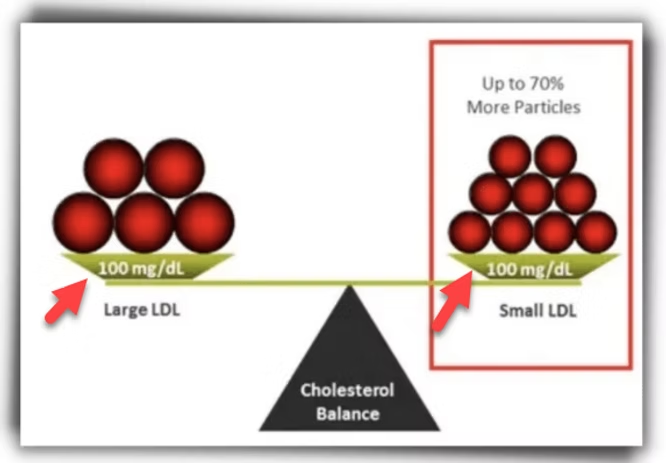Introduction: Protecting Your Heart Health
Heart attacks are no joke, and sadly, they claim the life of one American every 34 seconds. Shockingly, nearly 75% of patients hospitalized for heart attacks had cholesterol levels that wouldn’t raise a red flag based on current national cholesterol guidelines.
Taking Control of Your Heart Health
But don’t despair! There’s plenty you can do to avoid becoming a statistic. In this article, we’ll explore the top five crucial lab tests that provide insights into your heart health. By identifying potential risks and taking proactive measures, you can prevent heart attacks and other cardiovascular issues.
It’s disheartening that some doctors overlook these important tests in the conventional healthcare system. However, if you’re keen on having a comprehensive assessment, don’t hesitate to inquire about the following tests:
Test 1: Fasting Insulin Levels – Gauge Your Insulin Sensitivity
To start, let’s examine your fasting insulin levels. Ideally, a healthy range falls between 2.6 and 24.9. Personally, I prefer to see levels around 5. Insulin plays a vital role in the body, but excessive levels act like minuscule shards of glass coursing through your system. This triggers inflammation, substantially increasing your risk of heart issues.
Test 2: Homocysteine – A Marker of Inflammation
Homocysteine serves as a marker for inflammation in the brain and often presents in individuals with conditions like Alzheimer’s. While lab readings from 0 to 14.5 are considered “normal,” I advocate for a healthier range of 5-6.
When it comes to LDL and cholesterol, many conventional doctors tend to prescribe medication without considering the full picture. However, recent medical studies have revealed that the impact of these treatments may be lower than previously believed. That being said, it’s important to note that LDL and cholesterol can still contribute to poor heart health. The situation is more complex than we initially assumed.
For a comprehensive assessment, I recommend the NMR LipoProfile test, which measures the number of particles in your bloodstream. Ideally, your particle number should be lower than 1,000. Higher levels of particles directly correlate with poorer heart health.
The number of particles is crucial because LDL particles vary in size. While larger LDL particles may contain the same volume as smaller ones, there are fewer of them. Think of it like this: few, large-sized LDL particles pose significantly less risk compared to many small particles.
Test 4: LDL Size – The Importance of Particle Dimensions
It turns out, size does matter—especially when it comes to LDL particle size. This test allows us to measure the size of your LDL particles. Larger particles are like fluffy cotton balls, causing minimal damage to your cardiovascular system. Conversely, smaller LDL particles are denser and more compact.
You can think of the large particles as 10 buses traveling down a street, while the smaller ones are akin to 100 tiny cars. Statistically speaking, the 100 small cars are more likely to cause damage due to their sheer number.
Small LDL particles can adhere to the walls of your blood vessels, leading to plaque buildup and blockages in your circulatory system.

Test 5: Oxidized LDL - Unmasking the Dangers of Oxidation

Just as exposure to oxygen causes metal to rust or fruits to rot, LDL particles in your bloodstream can also undergo oxidation. High levels of oxidized LDL indicate that they are essentially rotting, leading to malfunction and inflammation throughout your body.

The “normal” range for this test typically falls between 10 and 170. Ideally, I recommend aiming for values below 70 to minimize the risk of heart disease and heart attacks.
Conclusion: Empowering Your Heart Health
Elevated insulin levels, homocysteine, and other inflammatory markers serve as warning signs for potential heart disease. These markers can also highlight issues with LDL particles, such as size, number, and oxidation.
Fortunately, all of these risks are preventable and can be significantly reduced. But the first step is to get the necessary lab work done. Armed with this information, you can take a proactive approach to safeguarding your health.
Take Charge of Your Heart Health Today
If you’re concerned about your heart health and want to understand your risks, don’t hesitate to explore these essential lab tests. While some doctors may overlook them, it’s vital to take control of your well-being and ensure a comprehensive assessment.
Frequently Asked Questions (FAQ)
High fasting insulin is a key indicator of insulin resistance. The blog explains that excessive insulin acts like "minuscule shards of glass" in your system, triggering significant inflammation that substantially increases your risk of heart issues. An ideal level is around 5, far below the standard "normal" range.
The LDL Particle Number (from an NMR LipoProfile) counts the actual number of LDL particles in your blood, rather than just measuring the cholesterol they carry. This is crucial because a high number of particles, especially small ones, is a more direct risk factor. The blog recommends an ideal particle number under 1,000.
Size is critical. The blog uses an analogy: large, "fluffy" LDL particles are like 10 buses on a road, while small, dense particles are like 100 tiny cars. The 100 small cars are more likely to cause damage (plaque buildup) because of their sheer number and ability to penetrate artery walls more easily.
Oxidized LDL refers to cholesterol particles that have been damaged by oxidation, similar to metal rusting. The blog states that high levels mean your LDL is "essentially rotting," which causes malfunction and widespread inflammation in your body, directly contributing to heart disease. An ideal level is below 70.
According to the blog, the five crucial but often overlooked tests are: 1) Fasting Insulin, 2) Homocysteine, 3) LDL Particle Number (NMR LipoProfile), 4) LDL Particle Size, and 5) Oxidized LDL. These provide a much more comprehensive picture of cardiovascular risk than standard cholesterol panels alone.














